Designing The Wearable Technologies of The Future
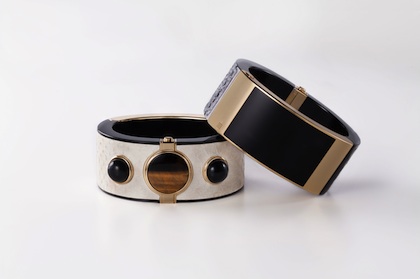
The smart and elegant bracelet MICA
Intel’s partnership with the famous watches and accessories brand Fossil and one of the biggest producers of glasses in the world, Oakley, has been started, and its contract with TAG Heuer to put the Swiss smart watch onto the market with the partnership of Google has been signed. Ayşegül İldeniz, who is directing the future of wearable devices at Intel, spoke to TURKOFAMERICA.
We know Intel as a firm producing chips; however, now customers encounter it more often in the area of wearable technologies. This is an experience that Intel has not had before. Is it possible that in the future we’ll see Intel stores similar to those of Apple, Microsoft, Samsung,etc.?
Life is getting faster each day and people are becoming more mobile. And, parallel to the fast life conditions and expectations of people who have become more mobile day by day, technology has also begun to evolve much faster in recent years. Especially with the jump in technological advancements within the past ten years, we have witnessed that many things we had previously thought of as science fictions have entered and eased our lives. This momentum of technology is not slowing down. On the contrary, it is gaining more speed each day and providing us with brand new horizons.

And, at Intel, by improving not only computers but also all other devices, we have also renewed our vision of aiming to make people’s lives around the whole world better in the coming years with the power brought forth by information technologies. We want to spread our success with computers over to all smart devices and provide consumers from all segments with devices that they would have the best experience with. To do this, we are continuing our work on silicon and processors by doing what we always do, and we will keep doing it. In addition, we have established a new department, called ‘New Devices’, in order to advance and integrate into our lives the new generation technologies that touch the futures of seven billion people living in the world today, and we have picked up the pace of our work to produce new devices in pursuance of our dreams.
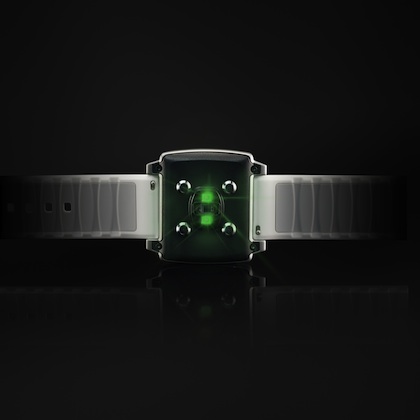
Looking at your deals made with firms, it stands out that you give importance not only to technology but also to aesthetics. Will your advancements in this field always remain like this? Do you think of putting out your products to the markets by establishing your own sales channels like Google Glass or Apple Watch?
As you know, many companies are working on wearable technologies. However, these early examples are products that are mostly for meeting technological needs. Of course, in time, we will see much more advanced examples and wearable technologies will become an essential part of our lives. At Intel, we believe that in order for these technologies to become widespread, aside from the technological needs, they need to appeal to people’s feelings and styles. And so, we think that fashion is ‘indispensible.’ For consumers to carry these devices with them, it is not enough that they only serve technological needs. Because none of us have things on just to have them on.
Things we carry or have on are also things that identify us, enable us to express ourselves, and reflect our styles. In this regard, the meeting of technology and fashion at the same point is very significant. Because the smart devices we would have on should also be elegant, comfortable and appealing to the eye. For this reason, our partnerships with Opening Ceremony and Barney’s New York are very important for us. We believe that this initiative will be a good example of the meeting of technology and fashion. The smart and elegant bracelet MICA, which has brought a fresh impetus to wearable technologies, enables short messages, meeting reminders and general notifications to reach women’s wrists directly. Additionally, the smart bracelet Basis provides a way for people to stay fit, sleep better, and control stress by counting their steps and monitoring their heart rate, sweat level, body temperature, and sleep routine and by collecting these data and evaluating them with mobile and online interface services. SMS Audio, the world’s first personal sound system that measures heart rate, is also among the wearable technologies that gets attention.
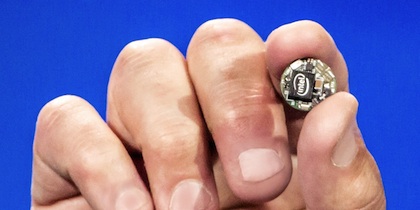
Furthermore, our partnerships with the famous watches and accessories brand Fossil and one of the world’s biggest glasses producers Oakley, along with our deal with TAG Heauer, which we made in partnership with Google in order to put out on the market a Swiss smart watch, are results of our strategy to link technology with fashion. We will continue our work of making wearable technologies a part of people’s daily lives and their styles.
You have mentioned that you made deals with brands such as Oakley, Tag Heuer, and Fossil. What are the things you give importance to when you are selecting the brands? When will we be able to see the new products on the market?
Objects we carry on us also identify us, enable us to express ourselves, and reflect our styles. For this reason, the devices need to be such products that meet the demands of not only technological needs but also aesthetic expectations, and, also, that are elegant, comfortable, and appealing to the eye. I can say that the products on which we signed deals are also products that would be prominent in this regard. By working with brands such as Oakley, Tag Heuer and Fossil, which get great interest in their lines and actually steer fashion, we will link wearable technologies, which will be an essential part of our lives in the future, with style. I work in a technology firm but my days go by talking with designers from different fields and company directors from different sectors about style, design, and fashion, and by discussing how the devices we will put forth could be made more elegant and preferrable, in addition to their functionality.
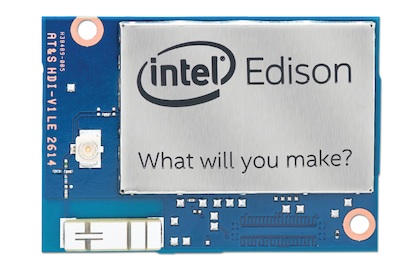
Are any famous brands producing textiles on your radar for wearable devices?
Advancement of wearable technologies is a big opportunity also for the fashion sector. Currently, we are talking about smart watches, smart glasses, smart bracelets, smart snap suits. In the very near future, there will be materials and accessories that would be both smart and valuable for our health: they would read our body signs and change shape and temperature according to our emotional and physical state, and forward messages about our health condition to certain channels immediately. Partnerships established with textile producers, fashion giants, and designers will open the way for this market’s growth and product variety. In the years ahead, we expect that all partnerships will continue by increasing in volume and that many different industries will start working together because of wearable technologies and that this will make a great impact.
Some people think there is now a generation whose personal relations are weakening and who is growing up in an asocial way by using these modern technological opportunities; do you worry that wearing technological devices would actually further speed up this situation?
This is one of the questions I get the most when I talk about smart devices. We have experienced very significant jumps in technology, especially within the past ten years. And wearable technologies will be another turning point that would change our ways of life. I don’t believe that these technologies would make people asocial. I think that they create a brand new communication method and a communication culture belonging to them. Smart products and wearable technologies will make many things in users’ lives easier and will raise our standards of living.
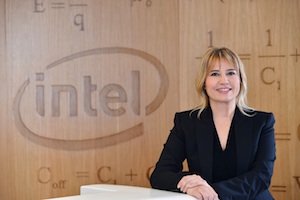
Could you give us some insight about how big of a volume the wearable technologies market might reach in the coming years?
It is expected that the volume of the wearable technologies market will reach 45 billion dollars and there will be a total of 300 million products in this market by the year 2017. Because people are becoming more mobile each day and life is getting faster for all of us. The advancements and the work show us that wearable devices will be everywhere within the next two or three years.
When you first started working at Intel, what view did you hold about the process of technology? When you look back today, what kind of a difference do you see between the projects you first worked on and the ones you do today?
Technology is advancing at an amazing pace. When you work at a company like Intel that leads this change, you grasp the greatness of this change and the power of technology in a better way. During the 1960’s, computers were as big as a room. The Centrino technology that Intel developed in the early 2000’s turned computers into mobile devices. Smart phones have placed computers into our pockets. As the last stage of the computers’ getting small and entering into our lives, one of the trends that will mark the coming years will be wearable devices. Wearable devices are an important revolutionary point that has started a new stage in the world of technology. At Intel, we are again leading this revolution that will change and improve the lives of the users in a significant way in this world that gets faster each day.
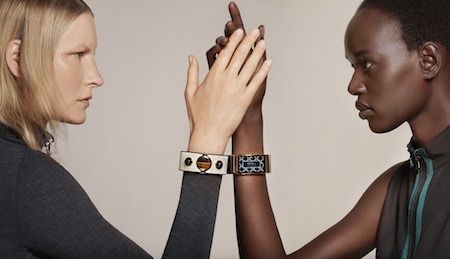
On the other hand, when we look at the technology trends in the world, we see that the concept of the ‘Internet of Things’ has begun to impact our lives in many ways. Today, there are nearly eight billion objects that are connected to the internet in the world. This means that the number of smart phones has exceeded the number of people in the world. It is estimated that there will be 50 billion smart and inter-connected devices in the world by the year 2020. And by 2025, the ‘Internet of Things’ will have a turnover of 6.2 trillion dollars. We are running into a world where things ranging from ACs to TVs will be connected and in communication with things you wear, such as glasses or watches. It would not be wrong to say that Intel, again, leads the market of the ‘Internet of Things’ with the technologies it develops. And I watch these developments with great interest, and as the Vice President of New Devices at Intel, I feel a further excitement for having the chance to direct these developments.
We know Intel as a firm producing chips; however, now customers encounter it more often in the area of wearable technologies. This is an experience that Intel has not had before. Is it possible that in the future we’ll see Intel stores similar to those of Apple, Microsoft, Samsung,etc.?
Life is getting faster each day and people are becoming more mobile. And, parallel to the fast life conditions and expectations of people who have become more mobile day by day, technology has also begun to evolve much faster in recent years. Especially with the jump in technological advancements within the past ten years, we have witnessed that many things we had previously thought of as science fictions have entered and eased our lives. This momentum of technology is not slowing down. On the contrary, it is gaining more speed each day and providing us with brand new horizons.

The smart and elegant bracelet MICA
And, at Intel, by improving not only computers but also all other devices, we have also renewed our vision of aiming to make people’s lives around the whole world better in the coming years with the power brought forth by information technologies. We want to spread our success with computers over to all smart devices and provide consumers from all segments with devices that they would have the best experience with. To do this, we are continuing our work on silicon and processors by doing what we always do, and we will keep doing it. In addition, we have established a new department, called ‘New Devices’, in order to advance and integrate into our lives the new generation technologies that touch the futures of seven billion people living in the world today, and we have picked up the pace of our work to produce new devices in pursuance of our dreams.

Looking at your deals made with firms, it stands out that you give importance not only to technology but also to aesthetics. Will your advancements in this field always remain like this? Do you think of putting out your products to the markets by establishing your own sales channels like Google Glass or Apple Watch?
As you know, many companies are working on wearable technologies. However, these early examples are products that are mostly for meeting technological needs. Of course, in time, we will see much more advanced examples and wearable technologies will become an essential part of our lives. At Intel, we believe that in order for these technologies to become widespread, aside from the technological needs, they need to appeal to people’s feelings and styles. And so, we think that fashion is ‘indispensible.’ For consumers to carry these devices with them, it is not enough that they only serve technological needs. Because none of us have things on just to have them on.
Things we carry or have on are also things that identify us, enable us to express ourselves, and reflect our styles. In this regard, the meeting of technology and fashion at the same point is very significant. Because the smart devices we would have on should also be elegant, comfortable and appealing to the eye. For this reason, our partnerships with Opening Ceremony and Barney’s New York are very important for us. We believe that this initiative will be a good example of the meeting of technology and fashion. The smart and elegant bracelet MICA, which has brought a fresh impetus to wearable technologies, enables short messages, meeting reminders and general notifications to reach women’s wrists directly. Additionally, the smart bracelet Basis provides a way for people to stay fit, sleep better, and control stress by counting their steps and monitoring their heart rate, sweat level, body temperature, and sleep routine and by collecting these data and evaluating them with mobile and online interface services. SMS Audio, the world’s first personal sound system that measures heart rate, is also among the wearable technologies that gets attention.

Furthermore, our partnerships with the famous watches and accessories brand Fossil and one of the world’s biggest glasses producers Oakley, along with our deal with TAG Heauer, which we made in partnership with Google in order to put out on the market a Swiss smart watch, are results of our strategy to link technology with fashion. We will continue our work of making wearable technologies a part of people’s daily lives and their styles.
You have mentioned that you made deals with brands such as Oakley, Tag Heuer, and Fossil. What are the things you give importance to when you are selecting the brands? When will we be able to see the new products on the market?
Objects we carry on us also identify us, enable us to express ourselves, and reflect our styles. For this reason, the devices need to be such products that meet the demands of not only technological needs but also aesthetic expectations, and, also, that are elegant, comfortable, and appealing to the eye. I can say that the products on which we signed deals are also products that would be prominent in this regard. By working with brands such as Oakley, Tag Heuer and Fossil, which get great interest in their lines and actually steer fashion, we will link wearable technologies, which will be an essential part of our lives in the future, with style. I work in a technology firm but my days go by talking with designers from different fields and company directors from different sectors about style, design, and fashion, and by discussing how the devices we will put forth could be made more elegant and preferrable, in addition to their functionality.

Are any famous brands producing textiles on your radar for wearable devices?
Advancement of wearable technologies is a big opportunity also for the fashion sector. Currently, we are talking about smart watches, smart glasses, smart bracelets, smart snap suits. In the very near future, there will be materials and accessories that would be both smart and valuable for our health: they would read our body signs and change shape and temperature according to our emotional and physical state, and forward messages about our health condition to certain channels immediately. Partnerships established with textile producers, fashion giants, and designers will open the way for this market’s growth and product variety. In the years ahead, we expect that all partnerships will continue by increasing in volume and that many different industries will start working together because of wearable technologies and that this will make a great impact.
Some people think there is now a generation whose personal relations are weakening and who is growing up in an asocial way by using these modern technological opportunities; do you worry that wearing technological devices would actually further speed up this situation?
This is one of the questions I get the most when I talk about smart devices. We have experienced very significant jumps in technology, especially within the past ten years. And wearable technologies will be another turning point that would change our ways of life. I don’t believe that these technologies would make people asocial. I think that they create a brand new communication method and a communication culture belonging to them. Smart products and wearable technologies will make many things in users’ lives easier and will raise our standards of living.

Could you give us some insight about how big of a volume the wearable technologies market might reach in the coming years?
It is expected that the volume of the wearable technologies market will reach 45 billion dollars and there will be a total of 300 million products in this market by the year 2017. Because people are becoming more mobile each day and life is getting faster for all of us. The advancements and the work show us that wearable devices will be everywhere within the next two or three years.
When you first started working at Intel, what view did you hold about the process of technology? When you look back today, what kind of a difference do you see between the projects you first worked on and the ones you do today?
Technology is advancing at an amazing pace. When you work at a company like Intel that leads this change, you grasp the greatness of this change and the power of technology in a better way. During the 1960’s, computers were as big as a room. The Centrino technology that Intel developed in the early 2000’s turned computers into mobile devices. Smart phones have placed computers into our pockets. As the last stage of the computers’ getting small and entering into our lives, one of the trends that will mark the coming years will be wearable devices. Wearable devices are an important revolutionary point that has started a new stage in the world of technology. At Intel, we are again leading this revolution that will change and improve the lives of the users in a significant way in this world that gets faster each day.

On the other hand, when we look at the technology trends in the world, we see that the concept of the ‘Internet of Things’ has begun to impact our lives in many ways. Today, there are nearly eight billion objects that are connected to the internet in the world. This means that the number of smart phones has exceeded the number of people in the world. It is estimated that there will be 50 billion smart and inter-connected devices in the world by the year 2020. And by 2025, the ‘Internet of Things’ will have a turnover of 6.2 trillion dollars. We are running into a world where things ranging from ACs to TVs will be connected and in communication with things you wear, such as glasses or watches. It would not be wrong to say that Intel, again, leads the market of the ‘Internet of Things’ with the technologies it develops. And I watch these developments with great interest, and as the Vice President of New Devices at Intel, I feel a further excitement for having the chance to direct these developments.
Last modified onSaturday, 06 May 2017 10:07
Latest from Admin TOA
- Fat Sal’s Italian Specialties Welcomes Customers in Bayville, NJ with a Renewed Concept
- FFD Wood LLC Delivers Custom Woodwork Solutions from Long Island
- A Tax Expert in the U.S. Tax World: An Interview with Samet Oynamıs
- Announcing the 2025 Edition of the 100 Most Influential Turkish Americans
- CEO Club New York Networking Night Stands Out with the Lamborghini Experience









